Milling, a popular industrial process that uses a spinning tool to remove material from a fixed workpiece and produce the parts you need with the appropriate finish. Although the milling process is simple, there are various kinds of milling machines and the orientation of the cutting tool accounts for the biggest part. Because of their distinct operational qualities, horizontal and vertical milling machines are suited for particular tasks and uses. The distinctions along with their benefits and drawbacks between vertical and horizontal milling machines will be explained in the material that follows.
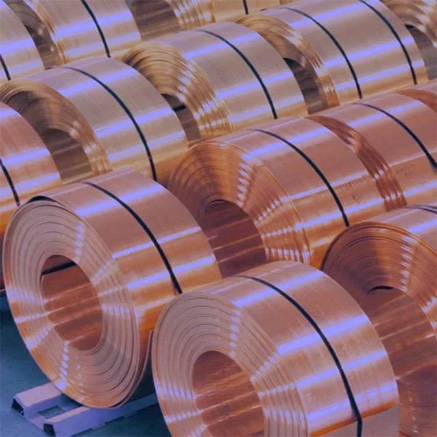
A Vertical milling machine is a commonly used machine tool whose main shaft is perpendicular to the ground. This structural design makes the vertical milling machine especially suitable for machining planes, grooves, gears, and various contour profiles. The table of a vertical milling machine can usually be moved vertically or horizontally to adapt to different processing needs. In accordance with your design specifications, the tool presses up against the stationary workpiece to remove the material. Two varieties of vertical milling setups are widely used in our industry.
Turret Milling Machines
Turret milling machines feature a stationary spindle and a movable table, offering versatility for various cutting tasks. They are known for their durability and ability to handle heavy workpieces.
Bed Milling Machines
Bed milling machines, also known as bed mills, feature a stationary spindle and a movable bed for cutting operations. This design provides stability and precision, making bed mills suitable for heavy-duty machining tasks.
These setups are fundamental to various machining operations and are widely used in manufacturing and industrial settings.
Machines for horizontal milling are a little bit different. The fundamental processes are still the same. A horizontal milling machine is a machine tool widely used in the machinery manufacturing industry, whose spindle is mounted on the horizontal surface of the bed, parallel to the table. This layout makes the horizontal milling machine particularly suitable for machining large and heavy workpieces. Horizontal milling machines can be processed using a variety of different types of tools, including cylindrical milling cutters, disc milling cutters, angle milling cutters, form milling cutters and face milling cutters to process a variety of planes, bevels, grooves, etc.
The ability of horizontal machines to handle angles is another crucial point to pay attention to. Horizontal milling machines have some flexibility in handling angles. Due to the horizontal layout of the spindle, various bevels and angles can be machined by replacing milling cutters with different angles or using special angle milling heads.
Horizontal milling machine is an important machining equipment, which has the advantages of compact structure, good rigidity and wide application range, and is widely used in machinery manufacturing, aerospace, automobile manufacturing and other fields.
Vertical milling machines are widely used in machinery manufacturing, mold manufacturing, aerospace, automotive industry and other fields. It is one of the indispensable equipment in the modern manufacturing industry. CNC vertical milling machines enjoy quite a few advantages, including:
Precision:
These machines can achieve high levels of precision and accuracy in machining, leading to consistent and quality results.
Versatility:
CNC vertical milling machines can handle a wide range of materials, from metals to plastics, and perform various operations such as drilling, tapping, and contouring.
Efficiency:
Automation and computer control enable efficient production processes, reducing manual labor and minimizing the potential for errors.
Complex Machining:
CNC machines can execute complex designs and intricate geometries, making them suitable for diverse manufacturing needs.
Cost-Effectiveness:
They can lead to cost savings over time due to reduced scrap, lower labor costs, and increased production efficiency.
Flexibility:
CNC machines can be reprogrammed for different tasks, allowing for flexibility in manufacturing processes.
These advantages collectively contribute to the widespread adoption of CNC vertical milling machines in various industries.
Certainly, while CNC vertical milling machines offer numerous advantages, it's important to consider potential disadvantages as well. Some drawbacks are as follows:
Initial Investment:
The cost of acquiring and setting up a CNC vertical milling machine can be substantial, requiring a significant capital investment.
Maintenance and Training:
These machines require regular maintenance and upkeep, and operators need specialized training to effectively program and operate them.
Dependency on Software:
Any software malfunctions or errors can disrupt production and may require technical support to resolve.
Limited Flexibility for Small Production Runs:
For small-scale or custom production runs, the setup time and programming involved in using CNC machines may outweigh the benefits of automation.
Susceptibility to Power Outages:
Interruptions in power supply can halt production and potentially lead to material wastage or disruptions in the manufacturing process.
Understanding both the advantages and disadvantages is crucial when evaluating the suitability of CNC vertical milling machines for specific manufacturing needs.
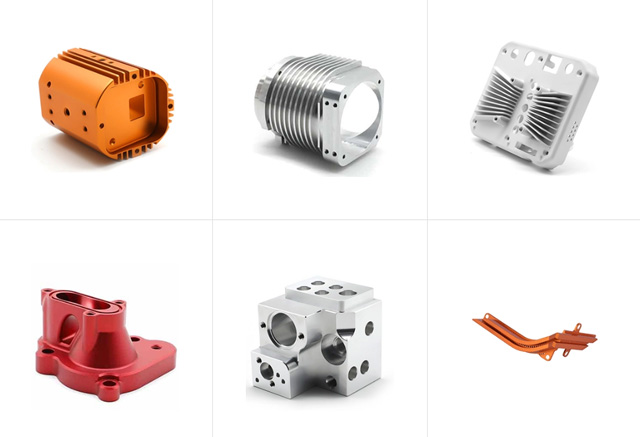
CNC horizontal milling machines indeed offer several advantages, including versatility, high efficiency, improved chip evacuation, better surface finish, enhanced fixture accessibility, suitability for heavy cutting, and automation capabilities. These factors collectively make them valuable assets in manufacturing settings.
Enhanced Chip Evacuation:
The horizontal orientation allows for better chip removal during the machining process, leading to improved surface finishes and reduced tool wear.
Multi-Surface Machining:
These machines can perform multiple operations on different surfaces of the workpiece without repositioning, leading to increased efficiency and accuracy.
Heavy-Duty Cutting Capability:
Horizontal milling machines are well-suited for heavy-duty cutting and can handle large and complex workpieces with ease.
Reduced Distortion:
The horizontal orientation minimizes the risk of workpiece distortion, especially when machining long or thin components.
Increased Productivity:
The ability to use multiple cutting tools simultaneously and the potential for automation lead to higher productivity and shorter cycle.
Although CNC Horizontal Milling Machines have many advantages in terms of processing capacity and accuracy, it's necessary to consider potential drawbacks as well. There are some shortcomings:
Floor Space:
Horizontal milling machines typically require more floor space compared to vertical counterparts, which can be a consideration in smaller manufacturing facilities.
Initial Investment:
Similar to vertical milling machines, the initial cost of acquisition and setup for CNC horizontal milling machines can be significant.
Coolant Management:
The design of horizontal machines may require more elaborate coolant management systems to effectively handle chip evacuation and cooling during the machining process.
Limited Flexibility for Certain Workpieces:
Some workpieces may not be suitable for horizontal milling due to their geometry or size, limiting the machine's versatility in certain applications.
Tooling Costs:
Horizontal machines may require specialized tooling, and the costs associated with tool maintenance and replacement can be higher compared to vertical milling setups.
Understanding the advantages and disadvantages of CNC vertical milling machines is essential for selecting suitable processing equipment, optimizing production processes, improving product quality and reducing costs.
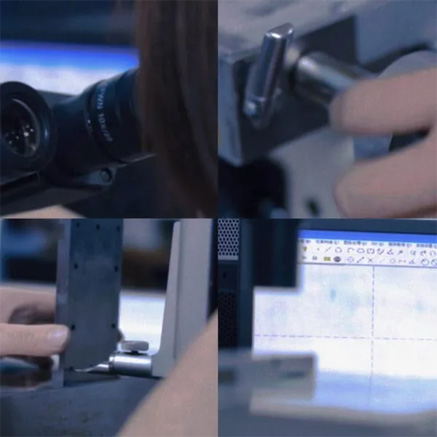
Vertical and horizontal milling machines each have unique advantages and are suitable for different applications. So what's the difference between horizontales y verticales machine? Here's a brief comparison between them:
1. Weld position:
- Horizontal mill machine: in horizontal welding, the weld joint is placed horizontally.
- Vertical mill machine: In vertical mig welding, the weld joint is positioned vertically.
Each position requires specific techniques and considerations. It’s necessary to master the technology of how to weld vertical and horizontal mills to ensure proper fusion and structural integrity.
2. Workpiece clamping method:
- Horizontal milling machine: The workpiece is usually placed on a horizontal workbench, fixed by flat pliers, a dividing head or a special fixture.
- Vertical milling machine: the workpiece is placed directly on the vertical work table and fixed by flat pliers or special fixtures.
3. Tool type and installation:
- Horizontal milling machine: The tool is mounted on the horizontal rotating spindle and can use end mills, angle mills, end mills, etc.
- Vertical milling machine: the tool is installed on the vertical rotating spindle, commonly used end milling cutter, face milling cutter, T-slot milling cutter, etc.
4. Processing scope and applicability:
- Horizontal milling machine: suitable for processing large and heavy workpieces of internal and external surfaces, grooves, gears and other complex shapes, especially for the processing of box parts.
- Vertical milling machine: suitable for processing small, lightweight workpieces, such as plates, plate parts, etc., especially suitable for vertical and slot processing.
5. Operating field of view:
- Horizontal milling machine: the operating field of view is relatively poor, and the operator finds it difficult to directly observe the cutting zone.
- Vertical milling machine: the operating field of view is good, the operator can intuitively see the cutting process, easy to adjust the tool and observe the processing state.
6. Machine structure and floor area:
- Horizontal milling machine: the structure is relatively large, occupies a large area, and requires more space for installation and operation.
- Vertical milling machine: relatively compact structure, small footprint, easy workshop layout and space utilization.
7. Machining accuracy:
Horizontal milling machine: Due to its good stability, it can usually obtain higher machining accuracy, especially when processing large workpieces.
- Vertical milling machine: it can also achieve good accuracy when machining small workpieces, but for large workpieces, the accuracy may be slightly lower due to machine stability limitations.
8. Processing efficiency:
- Horizontal milling machine: in the processing of large workpieces, due to its good stability, can achieve high-efficiency processing.
- Vertical milling machine: due to easy operation and good field of view, usually high processing efficiency, especially suitable for single-piece small batch production.
9. Maintenance and operation difficulty:
- Horizontal milling machine: The structure is relatively complex and difficult to maintain and operate.
- Vertical milling machine: simple structure, easy maintenance and operation.
According to different processing needs and conditions, choosing the right horizontal or vertical milling machine is crucial to improving production efficiency and processing quality.
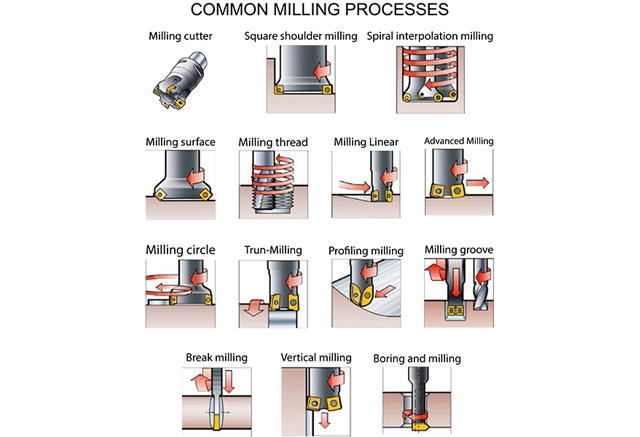
When choosing between vertical and horizontal machines, there are several key considerations to keep in mind:
Space and Layout: Consider the available space in your facility and the layout of your production area. Vertical machines may require less floor space, making them ideal for smaller facilities, while horizontal machines could be more suitable for larger spaces.
Workpiece Size and Shape: Evaluate the size and shape of the workpieces you'll be machining. Horizontal machines are often better for longer or bulkier workpieces, while vertical machines may be more efficient for smaller, intricate components.
Tool Access and Changeover: Think about the accessibility of tools and the ease of changeover. Vertical machines may offer better access to the workpiece and quicker tool changeover for certain applications, while horizontal machines might excel in scenarios where multiple operations are required.
Chip Management: Consider the management of chips and coolant during the machining process. Horizontal machines often have gravity working in their favor for chip evacuation, while vertical mills might require additional consideration for chip removal.
Spindle Orientation: Assess the spindle orientation that best suits your machining needs. Vertical machines typically have a vertical spindle, which may be advantageous for certain types of cuts, while horizontal machines feature a horizontal spindle that can be beneficial for specific operations.
Cost and Investment: Evaluate the initial investment, operational costs, and potential return on investment for each type of machine. Consider factors such as maintenance, energy consumption, and the versatility of the machine for future projects.
Each of these considerations plays a crucial role in determining the most suitable machine for your specific production requirements. If you provide more details about your specific application, I can tailor the advice to better fit your needs.
At Richconn, we take pride in being the home of the best CNC machining services. Our commitment to precision, quality, and reliability sets us apart in the industry. When you choose Richconn for your machining needs, you're choosing excellence at every step of the process.
Our state-of-the-art CNC machines, combined with our experienced team of professionals, ensure that your parts are machined to perfection, meeting the most stringent specifications. We understand the importance of delivering high-quality components on time, every time.
Partnering with Richconn means gaining access to a dedicated team that is passionate about exceeding your expectations. Whether it's prototyping, low-volume production, or high-volume manufacturing, we have the expertise and capability to bring your designs to life with unparalleled precision and efficiency.
Experience the difference that our best-in-class CNC machining services can make for your projects. Choose Richconn for reliable and top-quality machining solutions will definitely elevate your business to the next level.
Based on this comprehensive guide, we sincerely hope that you can get valuable insights for what's vertical and horizontal milling and know how to choose them. When it comes to implementing the knowledge gained from this guide, Richconn stands out as the premier partner for all your CNC machining needs. With a commitment to precision, reliability, and excellence, Richconn's expertise in both vertical mills and horizontal milling machines ensures that your projects are in capable hands. Trust Richconn to bring your designs to life with unparalleled quality and craftsmanship.
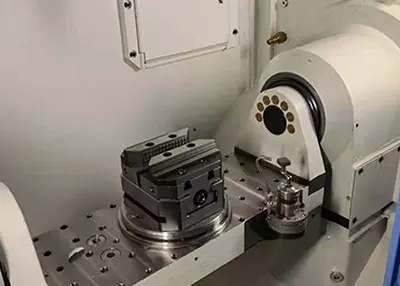 CNC Router Machinery: Unveiling the Core of Modern ManufacturingNovember 2, 2023Are you ready to explore the cutting-edge world of CNC router machinery? Whether you are a seasoned professional in the field or someone just getting started, this comprehensive guide will equip you with the knowledge you need to harness the full potential of CNC router machinery. From understanding the fundamentals to exploring innovative services, let's dive in and take your CNC router experience to the next level.view
CNC Router Machinery: Unveiling the Core of Modern ManufacturingNovember 2, 2023Are you ready to explore the cutting-edge world of CNC router machinery? Whether you are a seasoned professional in the field or someone just getting started, this comprehensive guide will equip you with the knowledge you need to harness the full potential of CNC router machinery. From understanding the fundamentals to exploring innovative services, let's dive in and take your CNC router experience to the next level.view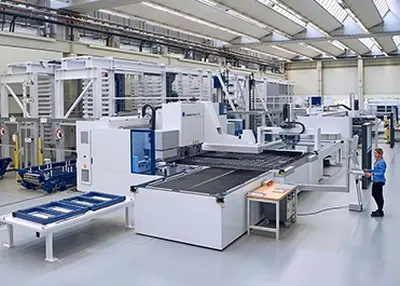 How to Find an Excellent Precision Machining Manufacturer in China?October 19, 2023China is one of the more developed countries in the global manufacturing industry, so it is not difficult to find an excellent precision machining manufacturer in China, but how to find a reliable quality, good service, reasonable price precision machining manufacturer in China, it is necessary for consumers to make a careful assessment when choosing.view
How to Find an Excellent Precision Machining Manufacturer in China?October 19, 2023China is one of the more developed countries in the global manufacturing industry, so it is not difficult to find an excellent precision machining manufacturer in China, but how to find a reliable quality, good service, reasonable price precision machining manufacturer in China, it is necessary for consumers to make a careful assessment when choosing.view Sheet Metal Bending: Comprehensive Insights from Processes to EconomicsJuly 25, 2024Sheet metal bending holds a significant place in manufacturing. Let’s discover its diverse processes, unique methods, safety aspects, and cost analysis in this comprehensive exploration.view
Sheet Metal Bending: Comprehensive Insights from Processes to EconomicsJuly 25, 2024Sheet metal bending holds a significant place in manufacturing. Let’s discover its diverse processes, unique methods, safety aspects, and cost analysis in this comprehensive exploration.view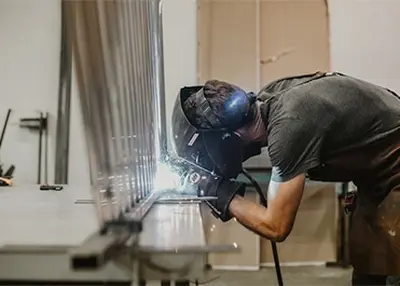 Tig vs Mig Welding: Choosing Between Two Great WeldingNovember 16, 2023When comparing MIG and TIG welding, it is important to consider the factors involved, the pros and cons they have, and the applications they are suitable for.view
Tig vs Mig Welding: Choosing Between Two Great WeldingNovember 16, 2023When comparing MIG and TIG welding, it is important to consider the factors involved, the pros and cons they have, and the applications they are suitable for.view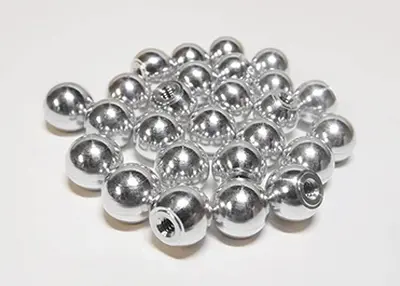 Advantages of Aluminum for CNCOctober 13, 2023Aluminum is very dimensionally stable, so you can cut away a lot of it and still keep the residual stress within limits. Using carbide tools and modern coolants will give you an excellent finish. For a matte finish, you can bead blast the parts or anodizing them for a uniform aesthetic finish and added corrosion resistance.view
Advantages of Aluminum for CNCOctober 13, 2023Aluminum is very dimensionally stable, so you can cut away a lot of it and still keep the residual stress within limits. Using carbide tools and modern coolants will give you an excellent finish. For a matte finish, you can bead blast the parts or anodizing them for a uniform aesthetic finish and added corrosion resistance.view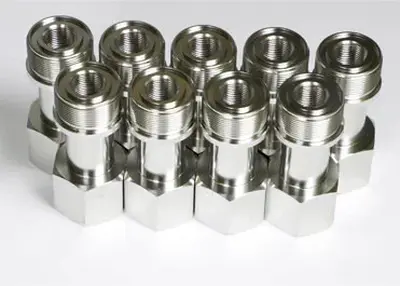 Ten Questions and Answers About Stainless Steel Valves: Unlocking the Secrets of Check ValvesAugust 11, 2023IntroductionIn this comprehensive article, we will delve deep into the mysteries of stainless steel valves, with a particular focus on the working principles and applications of check valves across di...view
Ten Questions and Answers About Stainless Steel Valves: Unlocking the Secrets of Check ValvesAugust 11, 2023IntroductionIn this comprehensive article, we will delve deep into the mysteries of stainless steel valves, with a particular focus on the working principles and applications of check valves across di...view